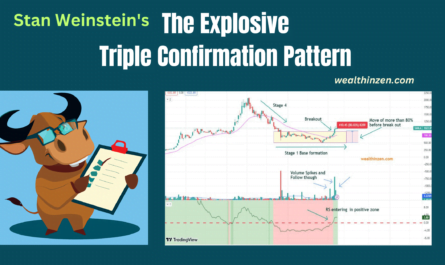Recently I was going through a Facebook page that described the characters of Traders / Investors and related it to the corresponding animals. For example, the Investor/Trader who waits patiently for his aim in a particular stock/ sector move is related to the peculiar character of a Tiger who waits patiently for its prey and Monkey was assigned to the trader who keeps on jumping from one stock to another without any reasons. This reminded me a quote on Tiger:
“ Tiger lies low not from fear but for aim” (Sherrilyn Kenyon).
Timing in the stock market is very important for an active investor. If we are in the right time in the stock market in the right sector the odds of our wins increases multifold. In this article I will share my thoughts on why being in the right sector can give consistent results and in what sectors we can see these opportunities in the current market trend, with the help of Relative Strength. Do read it fully to understand this core concept and let this concept etch our mind deeply.
Sector Rotation – a continuing process:
Market moves in cycles and each time the market moves, there will be an underlying theme. This theme may be subtle at times when the broad market (like Nifty 50 / Nifty 500) is consolidating or may be roaring at times when the broader market is in a bull run.(Remember the recent bull run 2020-2021?)
Identifying the sector leaders is very important to pin down our focus restricted only to a handful of stocks in that sector. This approach is called the Top to Bottom approach. Here, you don’t go behind a stock instead you tell the market to tell you which stock to buy.
Just like seasons come and go, sector trends also come and go. Sometimes, it can be IT, sometimes pharma. We can’t predict what will be the next leader. But, we should be prepared to listen to the market, when it starts giving subtle signals and be ready for the next big leap.
See the image below:
This is the historical data of Sector Wise leader for the past 15 years: Source: Novel Investor
The abbreviation of each sectors in S&P 500 are given below:
Now, you can see that energy (ENRS)was the top performing sector in 2007, however from 2014-2020 it was performing very poorly and was placed at the bottom of the performance chart. In the above table look for the best and worst performances for each sector.
For example, the Energy sector has given 54% as its best performance but the worst performance is -34.9%, in a financial year. Even a single year of worst performance will make a lot of difference in our portfolio. That’s why it is very important to understand the real significance of drawdowns.
Thus, being in the right sector becomes prudent.
Research Validation of Sector rotation for trading success:
According to a study done by the University of Chicago, 49% of the price movement of a stock is caused by the Sector itself, while the broader market contributes to 31% of the movement and the fundamental value of the stock contributes only 20% related to its movement.
(SOURCES: THE NEW SCIENCE OF INVESTING BY DR. ROBERT HAGEN, AND THE LATENT
STATISTICAL STRUCTURE OF SECURITIES PRICE CHANGES, BY BENJAMIN KING).
However, most of the time we spend our time analyzing about the particular company of the stock, its balance sheet etc.,. Our 80% of the time and research goes to analyzing the company.
When the flood comes, all the logs in the river tend to move irrespective of their quality. Similarly, when the underlying market current is strong, and you are in the right sector, even a mediocre stock will do better compared to a fundamentally strong stock in an unfavorable sector.
In a study done by Weisenberger, three popular strategies of investing was compared. The most popular Buy and Hold type of strategy performed the worst, while market timing fared a lot better and the best performance was Sector timing Strategy (Red Arrow).
See the image below :
SOURCE: WWW.WIESENBERGER.COM. UNDERLYING DATA IS PROVIDED UPON REQUEST. Book Ref: Tom Dorsey Trading Tips:
Easy way to find Sector Leaders:
Finding the sector leaders is not that much difficult if you know the basic logic. A leader is called so because he/she leads others. So, if one sector is to be called a leader, it should be moving ahead of other sectors and most importantly – the market itself.
Relative strength is a fantastic tool to analyze the strength of a stock or sector. Kindly note that Relative strength is completely different from RSI indicator.
Relative strength is the strength of a particular stock or a sector or commodity in relation to the bench mark. It is calculated by dividing the price of that particular stock by the benchmark value. Higher the resultant value higher is the relative strength and Vice Versa. It is calculated on a daily basis and is smoothened out as a 120 / 180 / 200 Moving averages. Negative values are plotted below a Zero Line and Positive values are plotted above a zero line.
Those who are interested in knowing this Relative Strength strategy in detail in relation to Indian markets can follow Mr. Premal Parekh, on twitter, who has dedicated his life to RS strategy.
The benchmark we usually take to compare the relative strength of a particular stock/sector is Nifty 50. If some sector is performing better than the top 50 stocks, it is worth betting on that sector.
In the current market, (as on August 2022) sectors like AUTO, Banks, FMCG, Consumption are performing outstandingly better when compared to other sectors. See the images below: These images show the relative strength of that particular sector plotted against the NIFTY 50 benchmark and smoothened out to 200 Day Moving Averages. This indicator is freely available in Trading view.
Just search for Mansfield relative strength indicator by OstapChester in the indicator section.
All the above three sectors have performed tremendously well and are well above the Zero Line (Positive Zone). The next sector that is in making to become next star performer is the banking sector:
See the image below:
What to do now?
Hope, it will be clear now, how important it is to be in the right sector to increase our winning probabilities.
Since, we have pinned down the best performing sectors as of today (August 2022), it is now easy to focus only on the stocks of these sectors.
Narrowing down our focus and waiting for the turn is just similar to a Tiger targeting a prey and waiting for its turn.
To be more on the safer side, and to further narrow down the watchlist, just focus on the stocks that are within Nifty indices. For example if you are looking into Auto sectors then go to Niftyindices.com and look only at the stocks that are in Nifty Auto.
In this way, we are basically selecting a stock with good volume turnover and good market capitalization. This reduces the risk of betting on penny stocks and stocks with probability of promoter manipulation.
After that, we can further narrow down the list by picking the stocks that are trading at an ALL TIME HIGH (ATH) or near to ATH. This filter will give us only two to four stocks to look into.
This entire process takes just a few minutes, and anyone of us can do this. The catch lies in executing the trade with boldness and vigor.
- Do we have the courage to enter now?
- Do we have the patience to wait after entering our trades?
- Do we have the calculations ready to decide the exact positions to be taken?
- Do we have the plan to exit when trade goes wrong?
- Have we decided the maximum drawdowns we can bear?
And finally, are we ready to trade like a TIGER instead of jumping around like MONKEYS??
Disclaimer:
The sectors mentioned here are my own analysis. Don’t take it as a trading tip / advice. I am not a SEBI registered analyst and the views expressed here are for educational purposes only. Do your own analysis before trading, investing. If in doubt consult your financial planner for clarifications.




10 thoughts on “Sector Timing in Stock Investing with Relative Strength: (Importance and its relevance in your investing Success)”